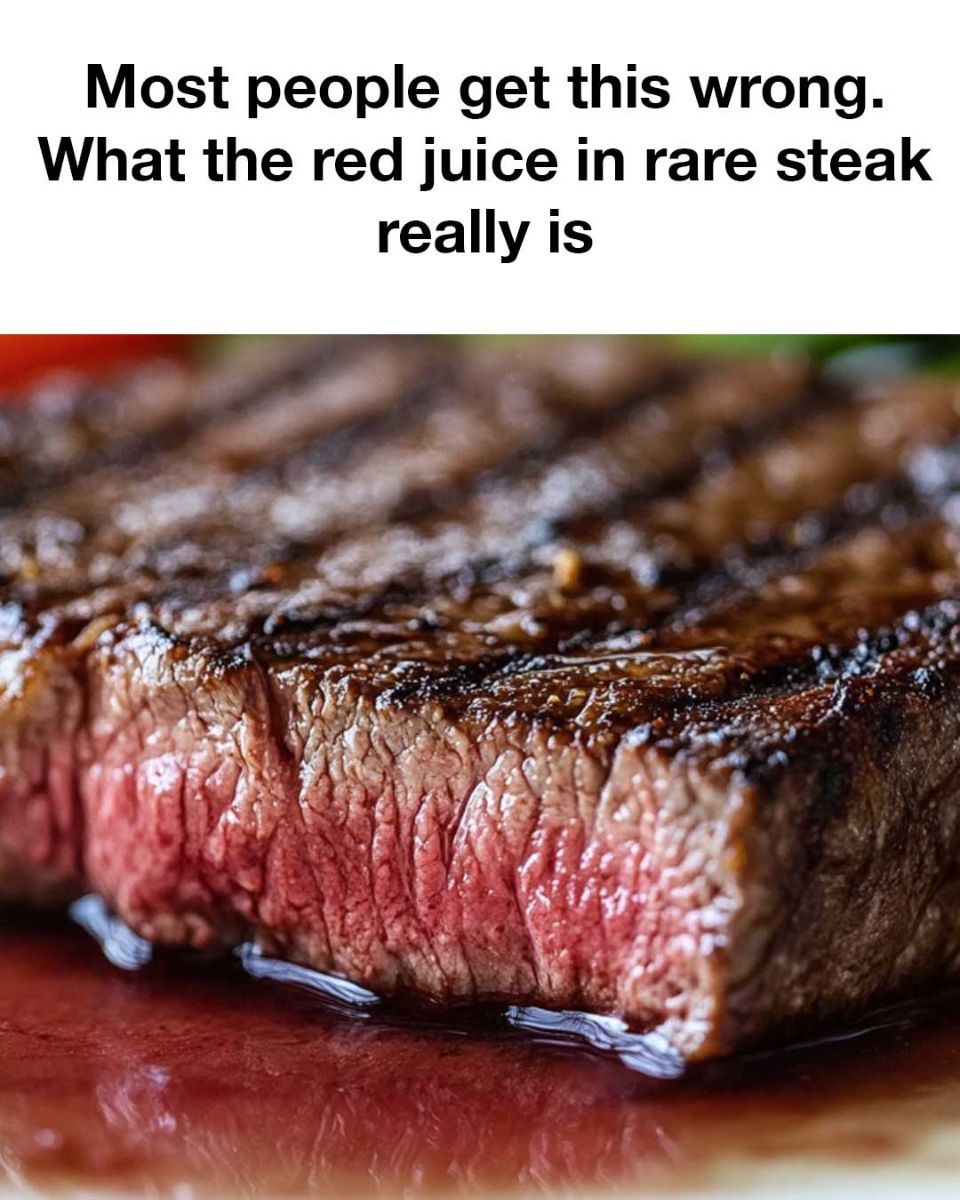If you’ve ever cut into a juicy rare steak, you’ve probably noticed the pool of red liquid on your plate and thought, “That’s blood, right?” Think again! Contrary to popular belief, that red juice isn’t blood—it’s something far more fascinating and perfectly natural.
The Truth Behind the Red Juice
The red liquid is actually a mix of water and myoglobin, a protein found in muscle tissue. Myoglobin stores oxygen in muscle cells, giving them energy and their rich red hue. When meat is cooked, myoglobin reacts to heat, changing the color of the meat. In rare steak, myoglobin retains its red or pinkish tint because it’s exposed to lower cooking temperatures.
Why People Mistake It for Blood
Steak is often associated with the idea of freshness and vitality, so the sight of red juice immediately brings blood to mind. However, almost all of the blood in an animal is drained during the butchering process. What’s left in your steak is myoglobin-rich fluid combined with moisture from the meat.
Myoglobin and Doneness Levels
The color of myoglobin also explains why steak appears red when rare and brown when well-done:
- Rare or medium-rare: Myoglobin remains bright red, keeping the steak juicy and tender.
- Medium to well-done: Heat breaks down myoglobin, leading to a dull brownish color and firmer texture.
Why You Shouldn’t Fear the “Red Juice”




